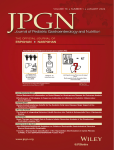Differences in Dietary Intake and Activity Level Between Normal-Weight and Overweight or Obese Adolescents
ABSTRACT
Background:
To investigate the prevalence of overweight and obesity in an adolescent group representative of a rural Mediterranean area and to determine possible associations with energy and nutrient intakes and levels of physical exercise.
Methods:
A representative sample of adolescents was drawn from the secondary school of Torre Pacheco (Murcia), a rural Mediterranean area located in the southeast of Spain. The population selected (331 adolescents aged 14–18 years), was divided into two groups: normal-weight subjects with a body mass index less than 23 kg/m2 and overweight or obese subjects with a body mass index of 23 kg/m2 or more. Weight, height, abdominal and hip perimeters, triceps skinfold, and upper arm circumference were measure. A prospective 7-consecutive-days food record and physical activity questionnaire were completed.
Results:
Overweight boys and girls had an apparently lower energy intake (P = 0.001 and P = 0.042, respectively), and carbohydrate intake (P = 0.000, P = 0.032) than their normal-weight counterparts, but they tended to underreport more often. Overweight boys derived a greater percentage of their energy from fat (P = 0.049) and less from carbohydrate (P = 0.016) than their normal-weight counterparts. Among girls, the percentage of energy derived from fat increased with body mass index (r = 0.210, P = 0.008), whereas fiber intake decreased (r = −0.145;P = 0.041). Overweight and obesity were negatively related to physical activity level only among boys (P = 0.033).
Conclusion:
There is a high prevalence of overweight and obesity in the adolescent population studied (48.2% in boys and 30.7% in girls). The study shows an association between overweight and obesity and nutrient intake and activity level.




